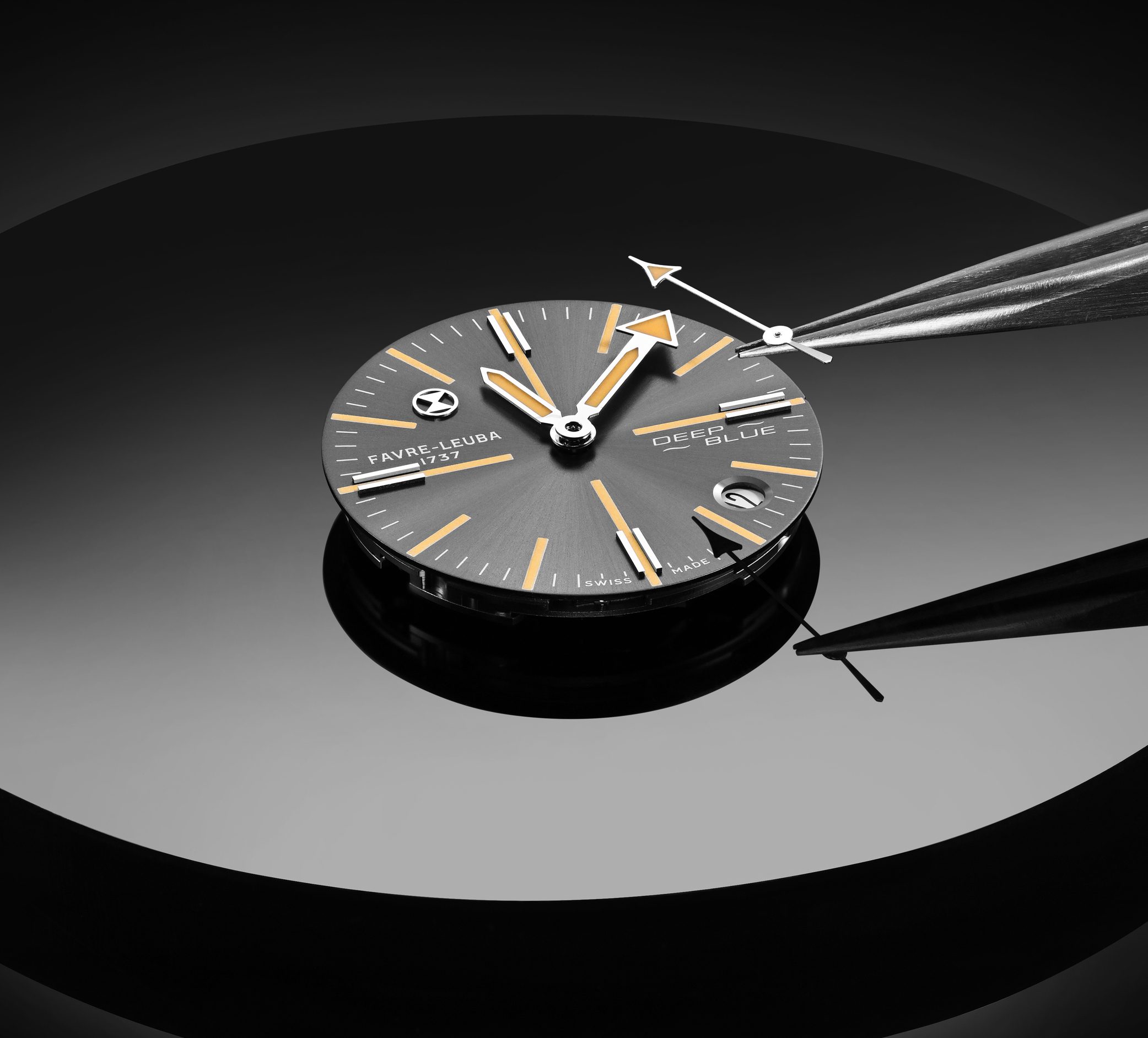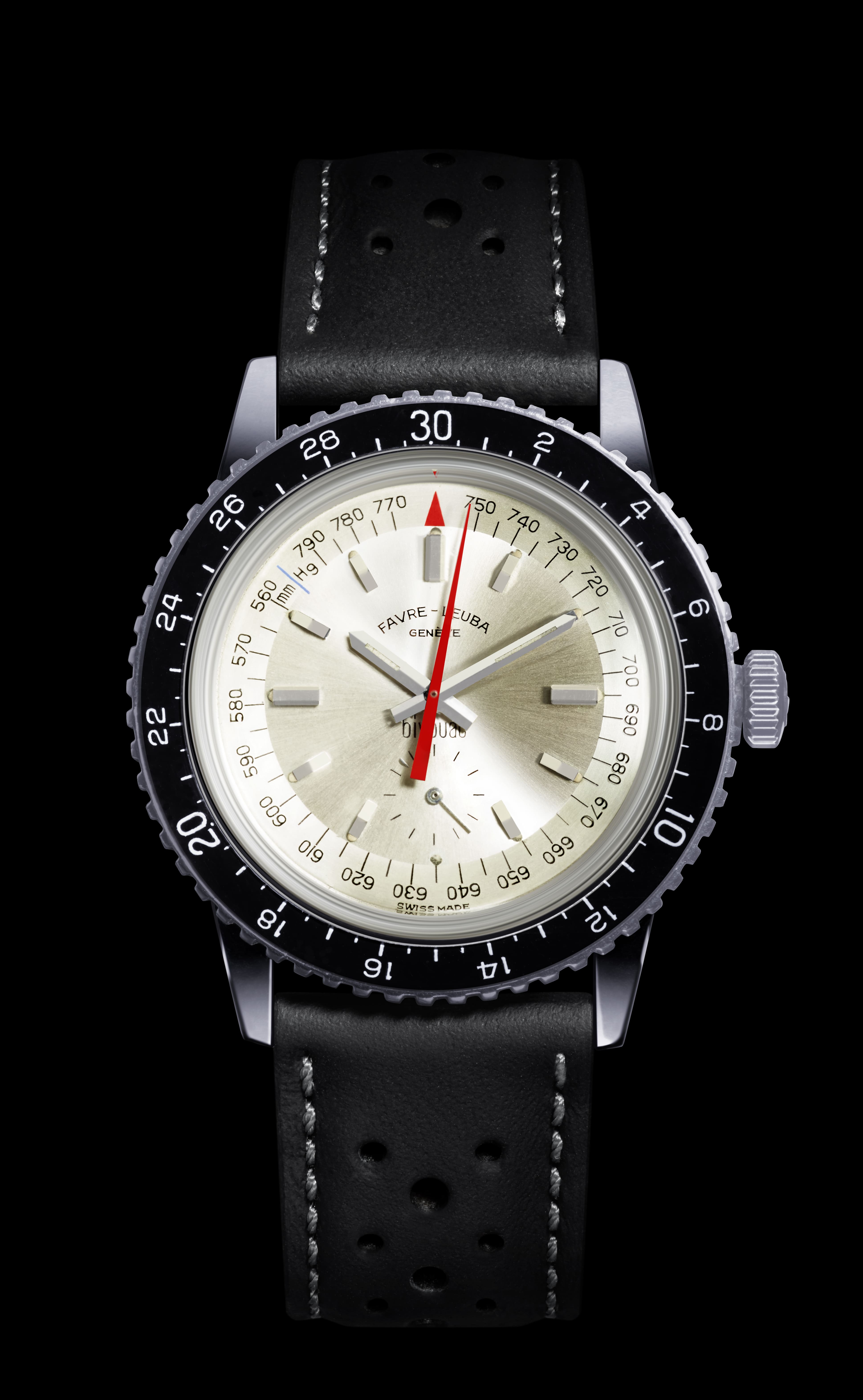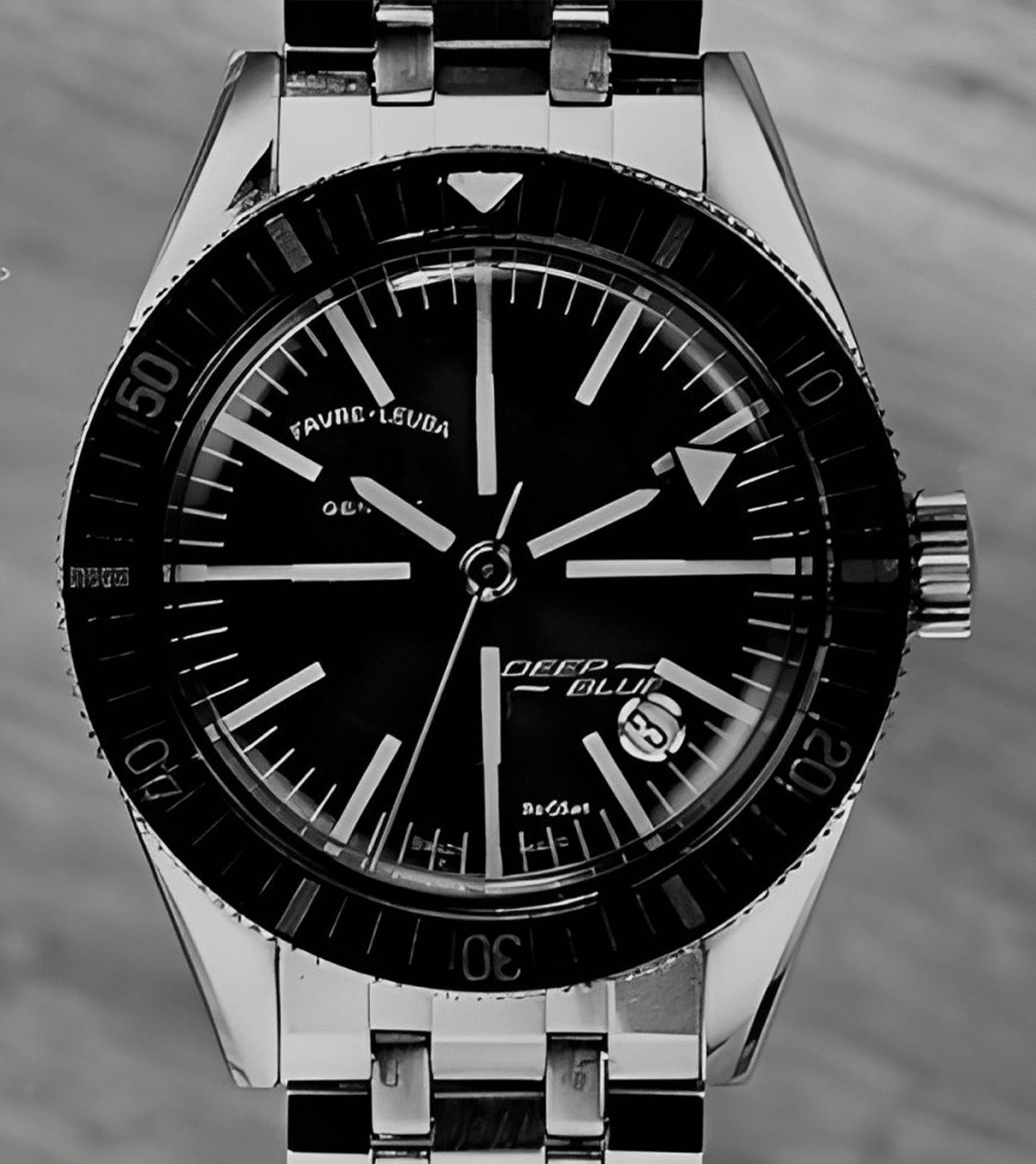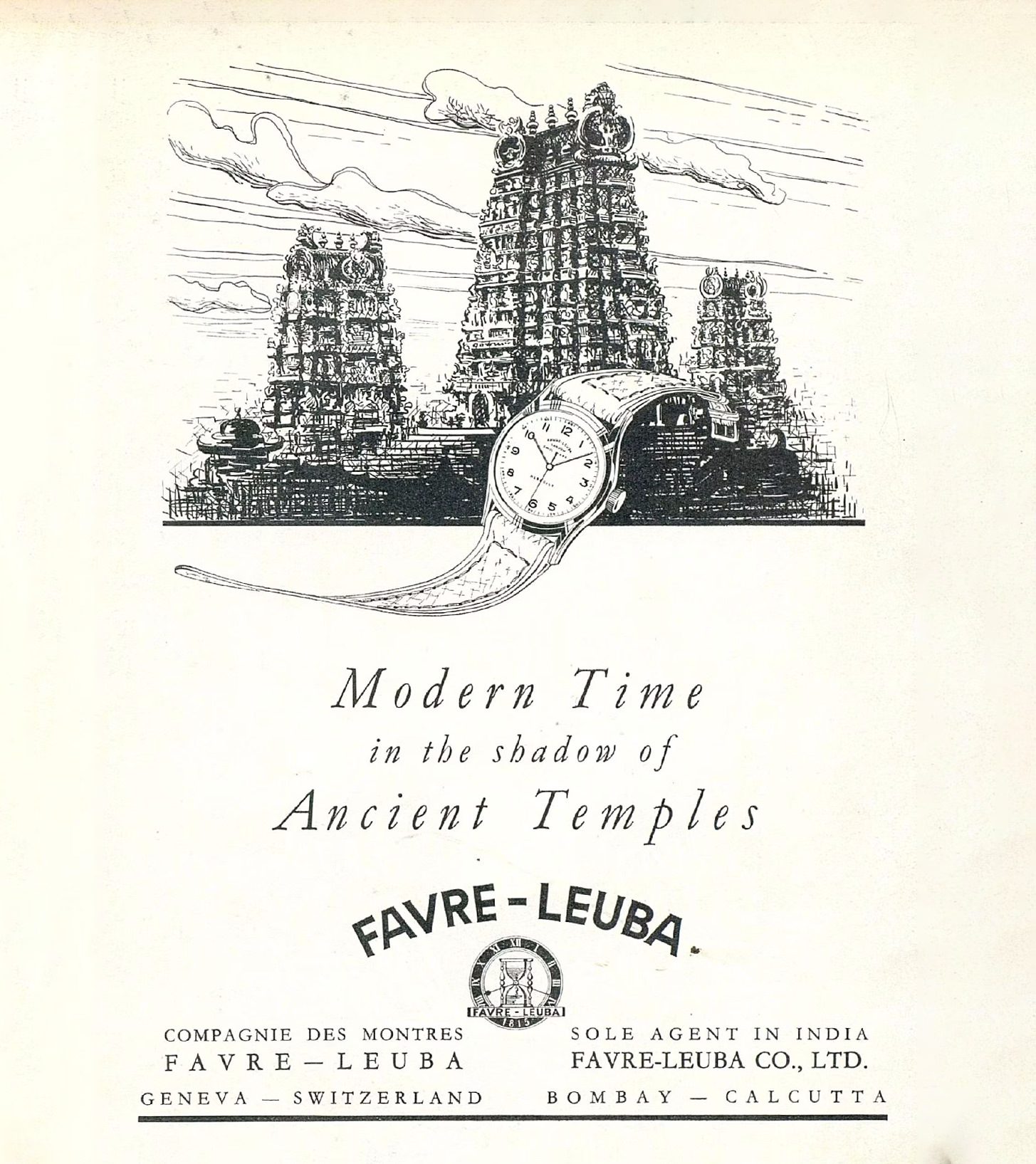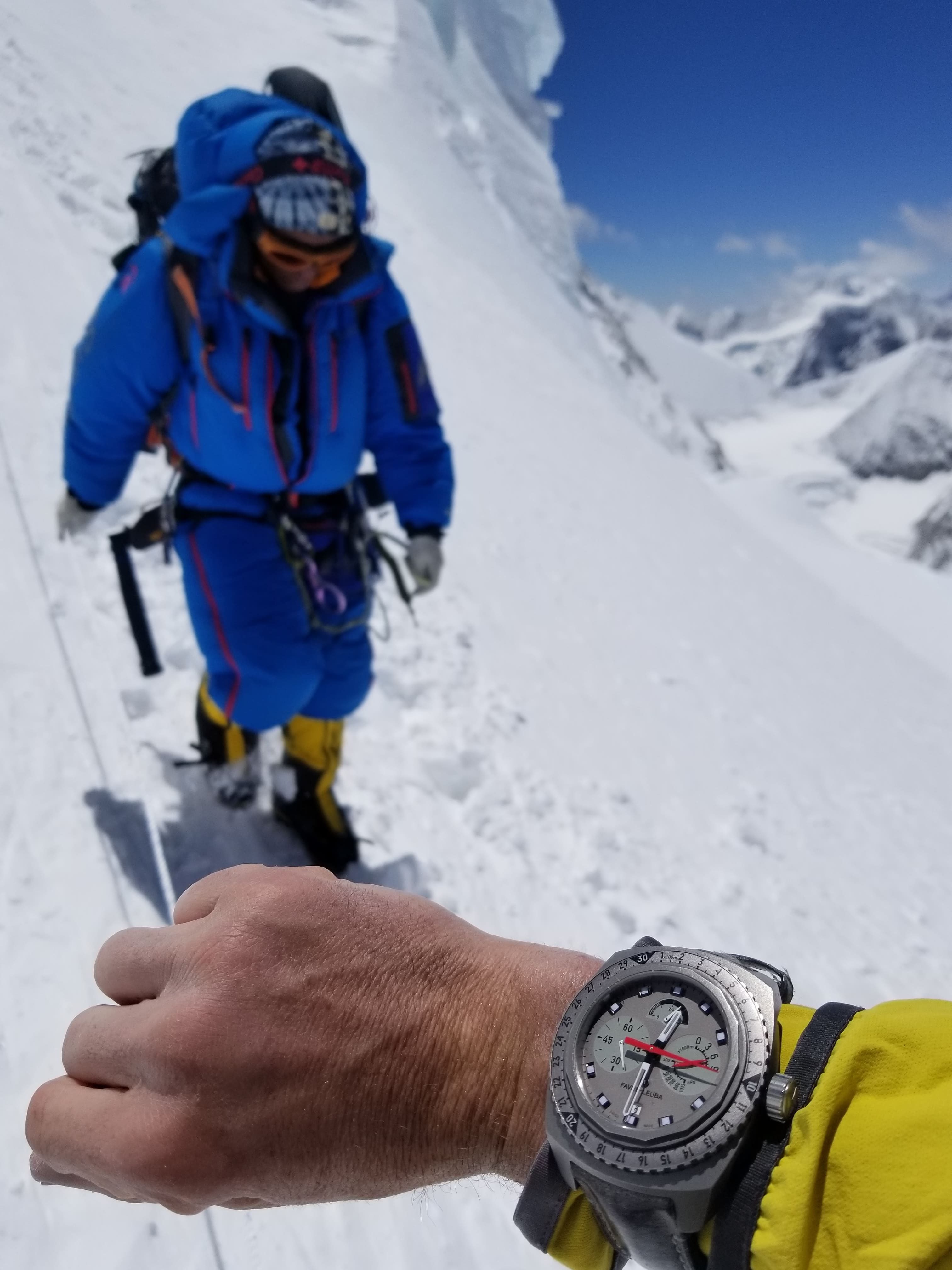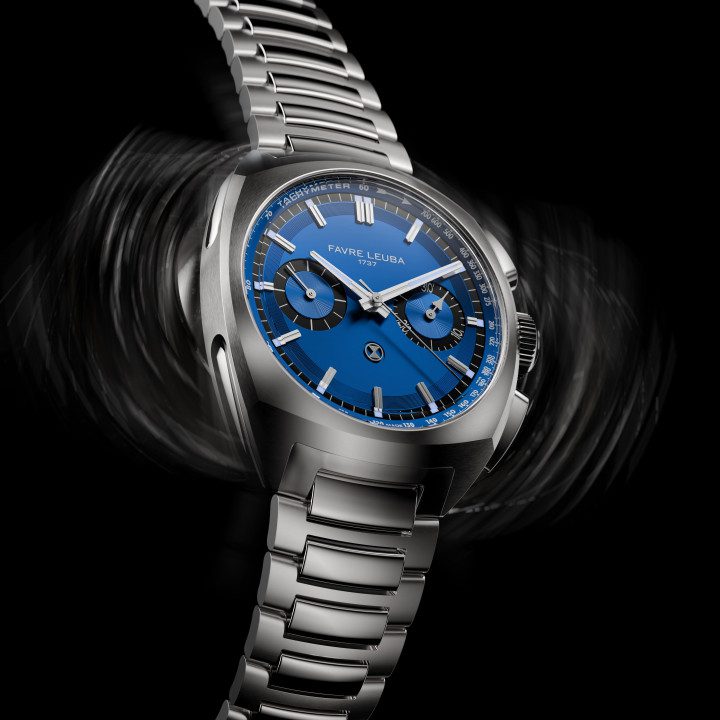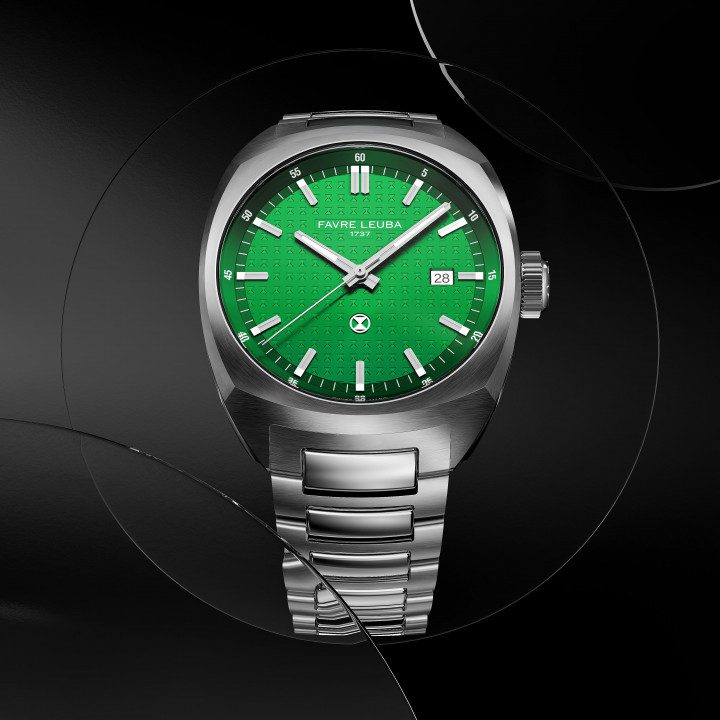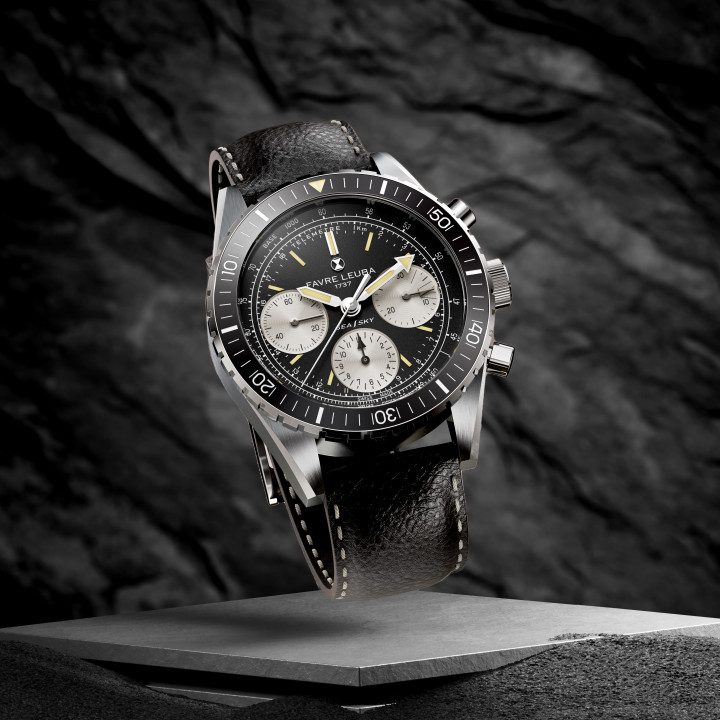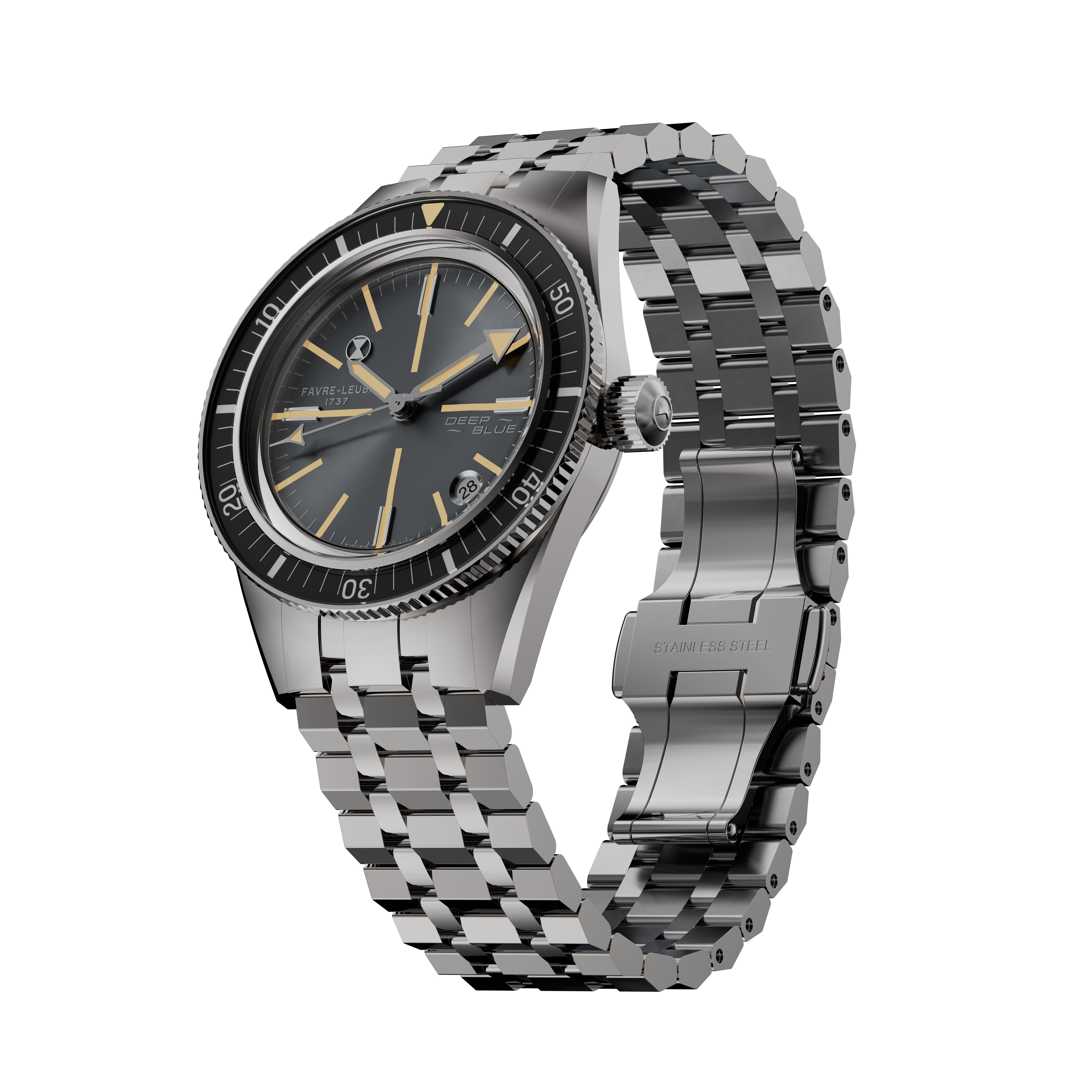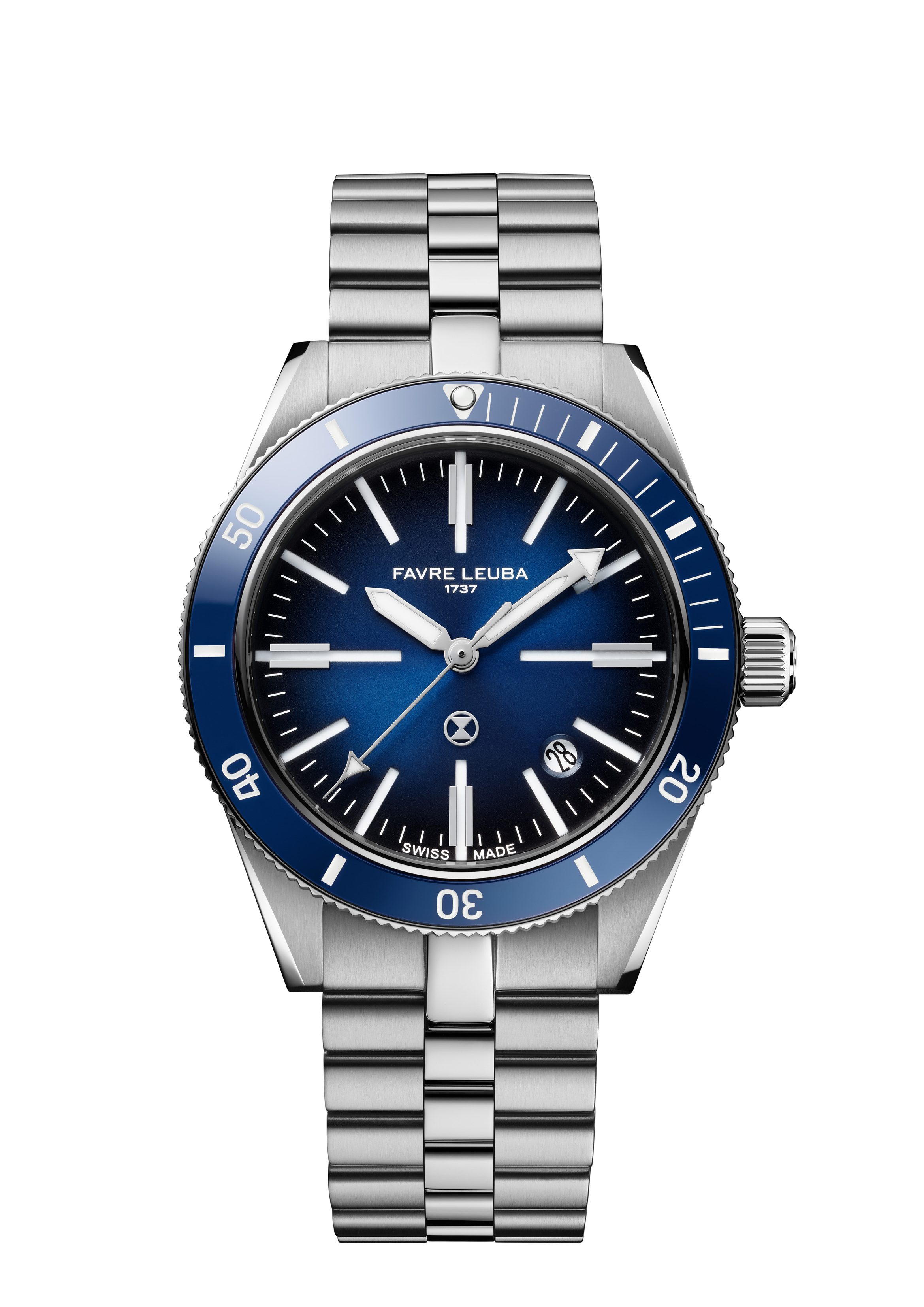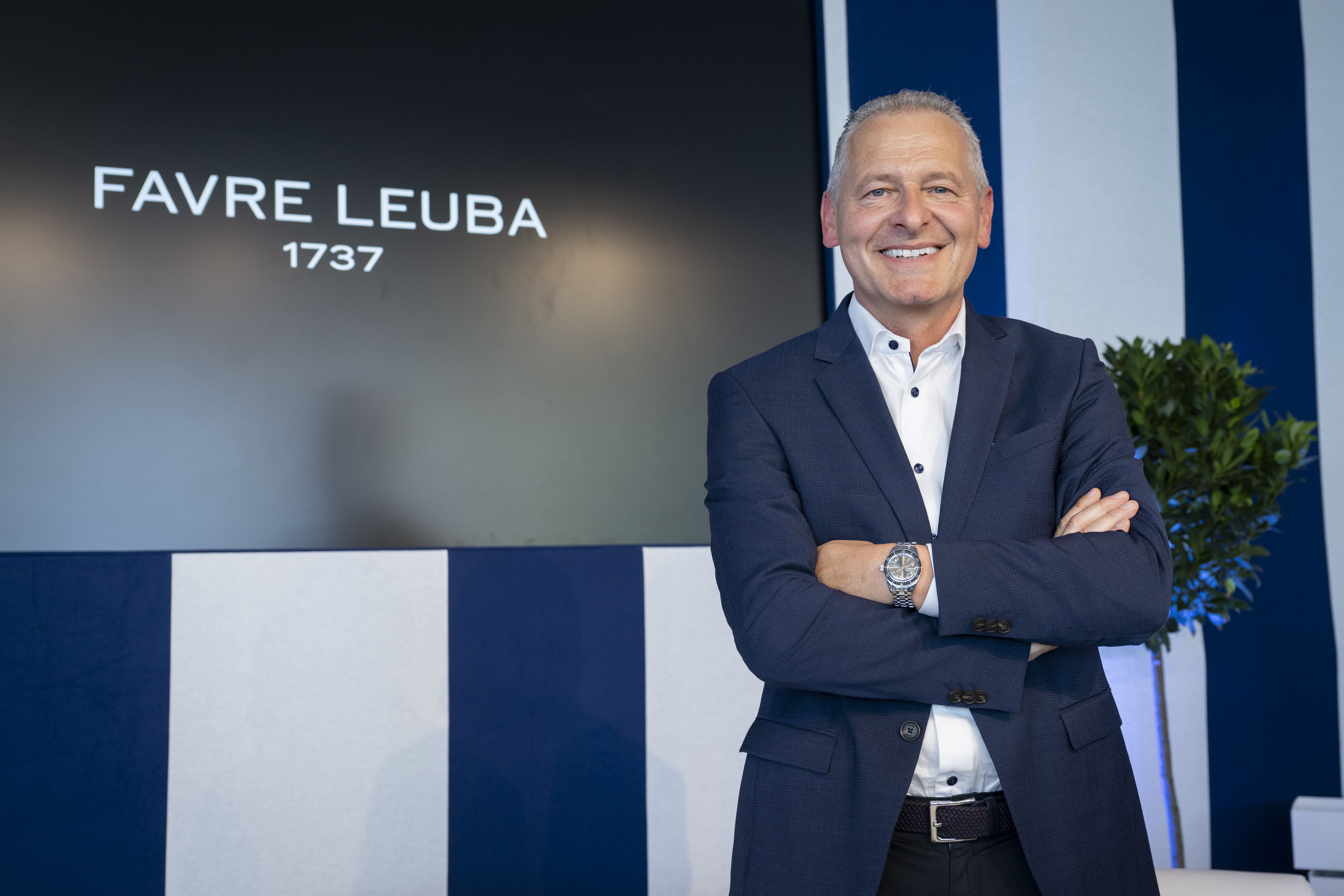In physician and author Abraham Verghese’s acclaimed novel The Covenant of Water (published by Grove Atlantic), there’s a character by the name of Mohan Nair, who reminisces about his friend, known only as Uplift Master, by referring to a certain special watch. “Does he wear that Favre Leuba watch? Don’t ask how I got it for him. And at that price!”, he’s quoted as saying in the book, with this particular scene set in 1943 Chennai (known then as Madras).
The book may be a fictional account and the episode not really integral to the overarching plot, but this I am certain of: watch lovers (especially those who are into vintage timepieces) getting a good deal on a Favre Leuba watch in pre-independent India (or even later, for that matter) would not shy away from boasting about it. It is, after all, a brand with history richer than that of most of its counterparts in the industry; as the second-oldest Swiss watchmaking brand (only Blancpain from 1735 is older), its story goes all the way back to 1737, when an official document addressed Abraham Favre an independent watchmaker in Le Locle.
What also makes Favre Leuba stand apart is its resilience, which has now come to be synonymous with the brand. For despite experiencing its share of twists and turns in the centuries that followed, the brand that gave us the Bivouac and the Bathy has emerged stronger each time. Also undeniable is its robust India connect; in fact, no discourse on India’s horological history would be complete without Favre Leuba. At the recently concluded Geneva Watch Days, the brand made quite the comeback; it had the industry aflutter with its 22 new references unveiled across three collections. Even more interesting is the fact that Favre Leuba is now owned by Silvercity Brands, a subsidiary of Ethos Limited (whose Ethos Watches division is India’s leading watch retailer today, and its rise to this position in turn merits an independent story). In this piece, we take a closer look at the journey of the iconic brand that is Favre Leuba and what lies ahead for it.
The Early Days
The brand’s origins can be traced to Abraham Favre (1702-1790) who, after an apprenticeship with watchmaker Daniel Gagnebin, set up his independent practice, in turn documented in 1737. After becoming the master watchmaker of Le Locle in 1749, he went on to collaborate with Jacques-Frederic Horiet, the father of Swiss chronometry in 1764; the same year saw Favre also work with Abraham Louis Breguet on innovative timepieces.
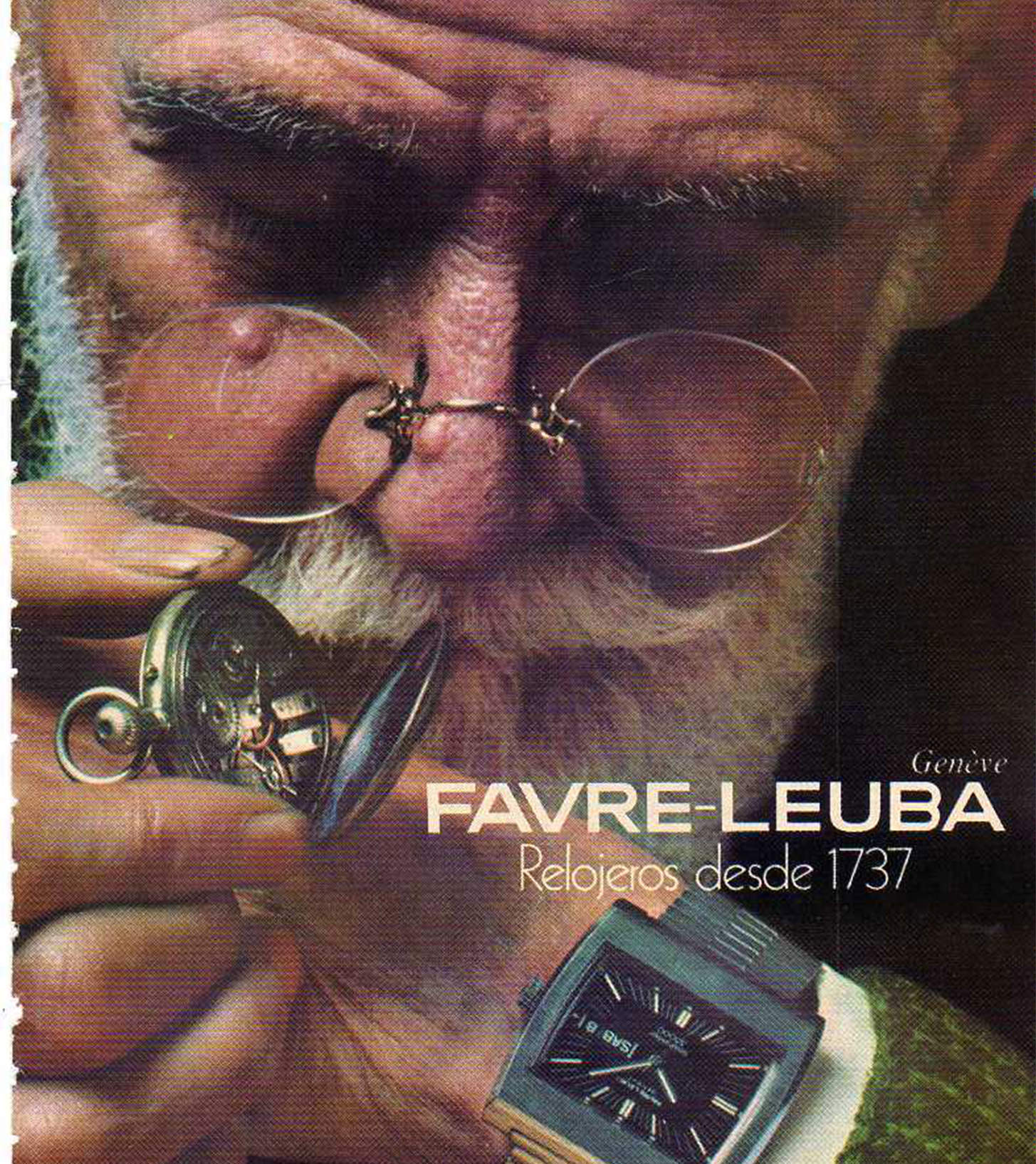
But it was his grandson Henry-Auguste who built on the Favre name. In 1815, he joined hands with watchmaker and merchant Auguste Leuba, thus leading to the birth of Favre Leuba. Then came the phase where Henry-Auguste travelled extensively—be it Germany, Russia, Cuba, New York, Brazil or Chile—in order to spread the word about their pocket watches, thereby expanding their clientele. The efforts bore fruit, with Favre Leuba pocket watches winning recognition at national and international exhibitions, think London (1851), New York (1853), Paris (1855), Bern (1857), and Porto (1865), among others.
The brand’s India chapter began in 1865, when Fritz Favre, another of Abraham’s descendants, travelled to India. Success in India (read on to know how it came about) paved the way for expansion and in 1896, the headquarters moved from Le Locle to Geneva. The year 1908 saw Henri Favre Leuba helm the brand; he continued to do so until his death in 1961.
Getting Noticed
In the 1940s and ’50s, the brand continued to participate in key exhibitions in Europe, such as the Basel Watch Show and the Salon Montres et Bijoux (trade show for watches and jewellery) in Geneva as well. Growth also meant retailing timepieces from other brands (including Patek Philippe and Zenith) and even acquiring some. In 1948, Favre Leuba took over the name and manufacturing facilities of Bovet, and the following two years saw the launch of several high-precision chronographs under the brand name Favre Leuba Bovet.
A big moment came in 1955, when the brand unveiled its in-house movement prowess with the manufacture calibre FL101, that was initially used in the Sea Chief, Sea King, and Sea Raider watch models. Five years later came their very first dive watch, Water Deep.
But without a doubt, it was their Bivouac—fitted with the patented FL251 calibre and hailed as revolutionary for its twin barrel movement—that shot to legendary heights. Launched in 1962, it was the world’s first mechanical wristwatch with an aneroid barometer for altimetry and air pressure measurement. As word about its value as a tool watch spread, the watch hit the headlines time and again: not only did it grace the wrists of the Swiss national parachuting team during the 1962 World Cup, but it was also worn by the likes of Italian mountaineer Walter Bonatti, Swiss alpinist Michel Darbellay and French polar explorer Paul-Emile Victor, all of whom referred to their Bivouacs to check the altitudes scaled.
The Deep Blue from 1964 was also well-received, but not nearly as much as the 1968 Bathy, which was the world’s first mechanical wristwatch to show the dive time and the current diving depth. Other notable models unveiled during the ’70s included the Sea Raider with its day and calendar indication, the Memo Raider that came with an automatic alarm and the Sea Sky and Sea Sky GMT models that upped the ante for diver’s watches at the time.
Winds of Change
The Sixties remained a period of growth and promise for Favre Leuba. In 1964, it even reincorporated production of its own ébauches (basic movement parts, such as the movement plates, bridges and mainspring barrel). And with Georges Favre acquiring the SAPIC Group in 1969, Jaeger-LeCoultre—which was owned by the group at the time—became a sister company. This move spawned a series of JLC timepieces (think Reversos and Master Memovox) with Favre Leuba branding.
By the late ’70s though, the cracks were quite visible: this was when the advent of quartz watches had begun to take its toll on several mechanical watchmakers. So JLC ended up being sold to VDO Automotive in 1978 and Favre Leuba was purchased by Benedom, who in turn sold it to LVMH in the 1990s.
In the decade that followed, Valentin SA, a Spanish company owned by Roberto Lopez Haba, decided to buy it off LVMH. The deal went through in 2003, but the fate of the brand remained unchanged for the most part; in 2011, ownership got transferred to India’s Tata Group through its Titan Company.
Following some more launches, its ownership changed yet again, and last year, Ethos Limited acquired Favre Leuba through its subsidiary, Silvercity Brands. Now the brand is off to a vigorous new start, as seen in its three collections that were launched during Geneva Watch Days (GWD) 2024; but more on that later.
The India Connect
Favre Leuba’s story is intertwined with Indian horology in more ways than one. For starters, having entered the Indian market all the way back in 1865 (when Fritz Favre set foot here), it is the first Swiss watch brand to have established a significant presence in the country, with its timepieces finding takers in what was then Bombay (Mumbai), Calcutta (Kolkata) and Rangoon (Yangon).
The period after World War II was a particularly favourable one for the brand in India: at a point when Europe and elsewhere demand was still struggling in the aftermath of the war, the encouraging response in India prompted them to set up their own office in Bombay. What also worked for the brand was the wide variety on sale, with wares ranging from its watches to alarm clocks made in collaboration with French company JAZ, as also clocks by Zenith (which entered India around 1900-1904 and had a tie-up with Favre Leuba till the 1960s). In fact, Favre Leuba even retailed in India the exact model of the pocket watch that Gandhi owned.
On the back of this success, the then family-owned company persevered in other watch markets, right from Switzerland to the rest of Europe, and later on, America and Africa. The post WWII era saw branches being opened in Hamburg, London, Singapore, and New York. Powered by a well-oiled distribution and first-class customer service, the brand gained prominence across these markets; even in India, entire generations grew up wearing this brand.
The good run continued right until the quartz crisis of the ’70s and ’80s, which set in motion many changes of ownership (refer to the previous section). In 2011, Favre Leuba renewed its connection with India upon its acquisition by Titan (reportedly for €2 million). The big revamp took place in 2016 when new Raider and Chief timepieces were launched; a special mention has to be made of their diving watch, the Raider Harpoon, as it offered a unique way of reading the time. Meanwhile, the Raider Bivouac 9000, unveiled in 2017 to commemorate the brand’s 280th anniversary, was the only watch that could mechanically track altitudes of up to 9000 metres.
In spite of these efforts, the brand relaunch didn’t quite have the desired impact. As recently as 2020, Titan is said to have spent an ambitious ₹275 crore on the brand revival, but after that didn’t work as well either, the company stopped producing new pieces (with the older models being sold only in India by Ethos Watches). Last year, it sold the brand to Chandigarh-based KDDL, a leading maker of watch components, whose subsidiaries include Ethos Watches (the largest retailer of timepieces in India today) and Silvercity Brands.
It must be pointed out here that KDDL, founded by Yash Saboo, reportedly owns 92 percent stake in Silvercity Brands and heading this Grenchen (Switzerland)-based company is Patrik Hoffman, an industry veteran with successful stints at Ulysse Nardin and WatchBox (now known as The 1916 Company). It was under his leadership that Favre Leuba was relaunched in August this year.
A Conscious Comeback
At the GWD 2024, the curtains went up on three of its collections; namely, Chief (land), Deep Blue (sea), and Sea Sky (air). While the Chief line has the cushion-shaped Date (40mm) and Chronograph (41mm) variants that seek inspiration from the brand’s 1970 Chrono Valjoux 23 hand-wound model, the Sea Sky Chronograph too captures the elegance of its ’70s antecedents, plus it boasts features such as a tachymeter scale and a telemeter scale.
The Deep Blue Revival and Renaissance models, on the other hand, make for brilliant takes on the brand’s Deep Blue line that was first introduced in 1964.
Developed by Antoine Tschumi (who previously made timepieces for Czapek & Cie. and Greubel Forsey), and Laurent Auberson (ex-Zenith and Chronoswiss) and fitted with movements made by La Joux-Perret (a Swiss movement manufacture owned by Citizen), these watches come attractively priced between 2,250 CHF to 4,375 CHF.
The Promise of More
With its affordable and yet high value timetellers, Favre Leuba is clearly aiming to broaden its appeal, targeting markets across the US, Europe, Middle East, Southeast Asia and Japan. Reports say that the brand plans to make several thousand timepieces annually in the next three years, in addition to establishing its watchmaking workshops and a museum in Grenchen in the coming months.
Among the collections being rolled out, the Chief might just get that extra nudge; Hoffman’s recent press statement about the line incorporating a variety of movements of different sizes in the future, therein “embodying the full potential of our renewal with elegance and innovation” points at this. And although Ethos Watches stores shall be an obvious point of sale in India, there are stand-alone stores in the pipeline as well. Given the brand’s popularity in the country over the decades, servicing of vintage models is also on offer (looks like it’s time to spruce up your grandad’s Favre Leuba and take it out for a spin!).
But perhaps the smartest move by the brand has been the celebration of its rich history, so we should safely expect more models in the Revival and Renaissance series in the coming months. It’s interesting to note the distinction between the two here: the Revival range draws almost 80 percent from its original models, and the Renaissance watches retain roughly 40 percent, leaving more room for experimentation. Hopefully, this also means that we can look forward to a new Bivouac or a Bathy soon. I, for one, can’t wait.
IMAGES COURTESY: Favre Leuba
CAPTIONS:
Lead image: Favre Leuba, the second oldest watch brand in the world, made a resounding comeback at GWD 2024 this August (featured here is the brand’s Deep Blue Revival dial)
From top to bottom: The history of Favre Leuba dates back to 1737; the Favre Leuba 1962 Bivouac; the 1964 Deep Blue; a Favre Leuba ad for the Indian market; Favre Leuba Raider Bivouac 9000 (from 2017); from left to right: GWD 2024 launches Favre Leuba Chief Chronograph, Chief Date and Sea Sky Chronograph; with Favre Leuba Deep Blue Revival and Deep Blue Renaissance; Patrik Hoffman, CEO of Favre Leuba

